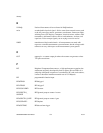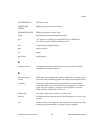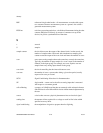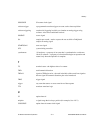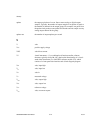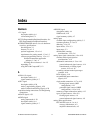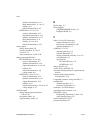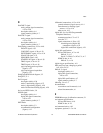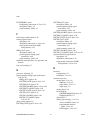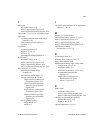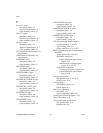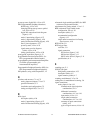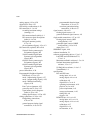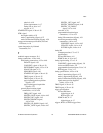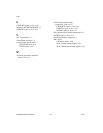Index
© National Instruments Corporation I-7 6023E/6024E/6025E User Manual
power-up state, digital I/O, 4-24 to 4-25
PPI (Programmable Peripheral Interface)
6025E only, 4-22 to 4-23
changing DIO power-up state to pulled
low, 4-24 to 4-25
digital I/O connections block diagram
(figure), 4-22
mode 1 input timing (figure), 4-27
mode 1 output timing (figure), 4-28
mode 2 bidirectional timing (figure), 4-29
Port C pin assignments, 4-23
power-upstate,4-24to4-25
signal names used in diagrams
(table), 4-25 to 4-26
timing specifications, 4-25 to 4-29
pretriggered acquisition (figure), 4-33
programmable function inputs (PFIs). See
PFIs (programmable function inputs).
programmable gain instrumentation amplifier.
See PGIA (programmable gain
instrumentation amplifier).
Programmable Peripheral Interface (PPI). See
PPI (Programmable Peripheral Interface).
PXI products, using with CompactPCI, 1-2
Q
questions and answers, C-1 to C-5
analog input and output, C-2 to C-3
general information, C-1
installation and configuration, C-2
timing and digital I/O, C-3 to C-5
R
RD* signal
description (table), 4-26
mode 1 input timing (figure), 4-27
mode 2 bidirectional timing (figure), 4-29
referenced single-ended input (RSE).See RSE
(referenced single-ended) mode.
requirements for getting started, 1-2 to 1-3
RSE (referenced single-ended) mode
configuration, 4-9 to 4-10
description (table), 3-3
recommended configuration
(figure), 4-12
single-ended connections for floating
signal sources, 4-18
RTSI clocks, 3-9
RTSI trigger lines
overview, 3-9
signal connection
PCI devices (figure), 3-10
PXI devices (figure), 3-11
PXI E series devices (figure), 3-11
specifications, A-9
S
sampling rate, C-1
SCANCLK signal
DAQ timing connections, 4-33
description (table), 4-5
signal summary (table), 4-7
scanning, multichannel, 3-5 to 3-6
settling time, in multichannel scanning, 3-6
signal connections
analog input, 4-8 to 4-19
common-mode signal rejection
considerations, 4-19
differential connection
considerations, 4-13 to 4-16
input modes, 4-9 to 4-11
single-ended connection
considerations, 4-17 to 4-19
summary of input connections
(table), 4-12
types of signal sources, 4-8 to 4-9



